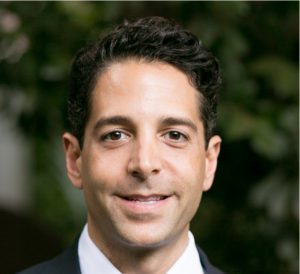

OAAA regularly features Thought Leadership Q&A from its committee members. This month, OAAA spotlights the Innovations Committee, asking members:
“What are some ways you’ve successfully helped traditional OOH sales teams embrace a more data and technology-driven approach to selling OOH advertising?”

Kevin Bartanian, Kevani
The promise and delivery of a better customer experience is a key element of the customer value exchange. While conceptually simple (i.e. deliver as promised), the positive experience is only realized when there is meaningful connection between the brand and customer. Achieving this connection is the root of the customer value exchange and holds true whether the company is large, small, or somewhere in between. Today’s data and technology-driven sales force makes full use of tools to prepare for, interact with, and track the actions and sentiment of their customers and prospects with the goal of achieving this level of connection. To have sales folks embrace a more data and technology driven approach to selling OOH advertising, you have to present the facts/benefits to each individual sales team member. Here are examples of the benefits you can highlight to an OOH sales team as it pertains to embracing a data and technology-driven approach to OOH advertising:
- Action is quicker than reaction. Avoid reacting when the market begins demanding a more data driven approach to OOH sales.
- You can have important information about your customers automatically delivered to you.
- You can easily and instantly find and connect to the best experts and data in your company to help close a sale.
- You have a higher win rate, a higher average deal size and a larger profit margin.
- You quickly achieve competence at your company, and are more satisfied and stay with your team longer.

Ian Dallimore, Lamar Advertising Company
This is a very exciting time for our industry with the massive amount of data available to both vendors and agencies. Brands are holding budgets close to more measurable and smarter campaigns, and OOH can and does play in this space.
One of my favorite training opportunities for an agency on more data-driven buy was for a QSR brand. We used data to measure the “old way” of buying within a 3-mile radius from the store and compared to all other inventory in the market. We were able to show the inventory that was outside of a 15-mile radius performed higher than the inventory the agency had purchased within a mile of the QSR. It was a great learning opportunity to use real data to determine locations that visited the QSR in the entire market. We took it a step further, because why wouldn’t you if the data is available, and measured the time of day of exposure. We used that data to highlight digital OOH they should purchase and what creative they should be playing, ie: breakfast, lunch, snack, or dinner. I strongly believe the more accurate data we can use when pitching OOH campaigns to brands, the more ad spend OOH will receive.

Marcus Danneil, Mile High Outdoor Advertising
The ability to provide advertisers with concrete stats through technology has added a tremendous amount of credibility to OOH. It has also enabled our sales team to approach new advertisers with ideas and confidence, not just generic cold calling. I believe this is one of the greatest attributes our industry needs to take advantage of. Sales people now have the ability to make certain assumptions about a specific business or category that is not spending money in OOH and research statistical information that heavily supports making OOH part of their media mix. Cold calling with a concept that is supported with statistics and potential creative executions elevates the chances of making a sale and introducing OOH to a new advertiser or category. Our sales team has really embraced taking advantage of this and making more educated cold calls.

Jonathan Gudai, Adomni
Be transparent. Ensure that the media plan and targeting strategy shows the actual locations and media types in the consideration set. We have found that traditional OOH sellers are interested in executing an audience-optimized strategy but still would like to maintain visibility into where the OOH ads might flow. They realize that every location in the inventory consideration set may not be reached; but the added level of location-level visibility provides buyers with more peace of mind as the industry transitions and embraces an audience-driven advertising approach. The same goes for proof-of-performance (POP) report transparency. By showing where ads played in addition to who was reached, we can bridge the traditional and new ways of OOH advertising.

James Heller, Wrapify
Leveraging attribution as a tent pole and pulling from the high-recall OOH delivers is becoming a theme in the new way OOH is bought and sold. Traditional OOH sales teams are now able to attach a performance metric to the value prop that OOH has never really had associated within the sales process. It moves OOH further down the funnel. Also, connecting the exposed audience across channels furthers the narrative. It has become the status quo for how we articulate our value to brands and agencies.

Leslie Lee, Vistar Media
Programmatic technology enables sellers to reach more buyers and buyers to access inventory seamlessly, transforming what was once a very manual task. Incorporating programmatic into an existing sales program allows networks to fully monetize unsold inventory and maximize their yield. We work hand-in-hand with media owners to help them build strategies that support multiple revenue streams for a robust network, across direct, private marketplace and open exchange sales. Vistar works with OOH sales teams to develop education on audience-based buying strategies and how to engage new digital buyers, so all teams are set up to succeed in OOH’s programmatic future.

Mike Norton, Norton Outdoor Advertising
A couple of years ago, we started utilizing a third-party proposal platform, which has enabled us to more consistently and thoroughly utilize Geopath audience delivery data in our proposals. Additionally, over the past 18 months, we have added digital online ad solutions to our arsenal. The data available through building, running, and optimizing these campaigns has helped to continue to change our mindset, relative to selling OOH. It has been eye-opening for our long-tenured salespeople to see where advertisers’ minds and expectations are, and how knowledgeable some are about the data that is important to them. Much of this data might simply be relative to their customer bases, but it is still the utilization of data to inform marketing decisions, including where budgets are spent. There is no doubt that, to continue to be relevant and competitive, we need to have a data-driven approach to helping our clients.

Sharon Peyer, Crane Connectivity Solutions
We begin by demonstrating how OOH data helps them accomplish client’s objective with the highest possible return on investment. We use historical viewership data to provide a benchmark for total viewable impressions; location-based audience data (ranging from demographics to purchase behaviors at our associated points of sale) to help inform creative messaging by audience; and sophisticated models both to conduct A/B testing for optimal deployment and to measure the effectiveness and impact of an OOH ad during and after the campaign. We look to bring in third parties wherever possible to measure the contribution of our campaigns to the entire media mix, and we incorporate the resulting insights into our standard best practices. Data and technology-driven OOH advertising is only as valuable as the results it can generate. With numerous data points, near-real time reporting, and a relentless focus on continuous improvement, buyers can see that digital OOH campaigns are better positioned to succeed in achieving client objectives because:
- We know we’re reaching the right audiences at the right times; and
- We can optimize messaging on the fly based on the performance data we’re monitoring and comparing to proven benchmarks that have been developed over time and validated by third parties.

Ben Putland, Grand Visual
When it comes to working with OOH sales teams, at Grand Visual we challenge ourselves to always put our most creative foot forward. Time and time again research has shown that contextual and relevant creative cuts through and makes an impact with audiences. Digital OOH provides us with a great opportunity to deliver contextual messages that really hit home. Sadly, campaigns of this type are still in minority with latest figures suggesting dynamic campaigns are less than 10 percent of all digital OOH.
My role when working with OOH sales teams sometimes involves demonstrating the benefit of smarter creative and using smart systems to clients so they understand the value. Whilst clients understand that delivering relevant and contextual messages at scale makes sense, our role is helping teams embrace the concept in addition to the larger budgets required to deliver dynamic campaigns. It’s great to see more clients and agency partners taking up the challenge and reaping the rewards of this way of working.

Ken Sahlin, DoMedia
There is a direct benefit to sales professionals who adopt technology driven improvements in the sales process – it allows them to spend more time working with their clients on their business instead of spending time in spreadsheets. Additionally, this provides the ability to be more responsive to presenting a wider range of OOH options as well as maximizing the creative impact of our medium. It also meets the needs of many of our future customers – fast and professionally organized OOH plans. This applies to both large agency customers as well as the local pizza shop, whose founder is training his daughter (who is technically savvy) to take over the business. Customers want information quickly and concisely returned to them so they can make timely decisions.
[wpforms id=”9787″]
Paid Advertisement

















